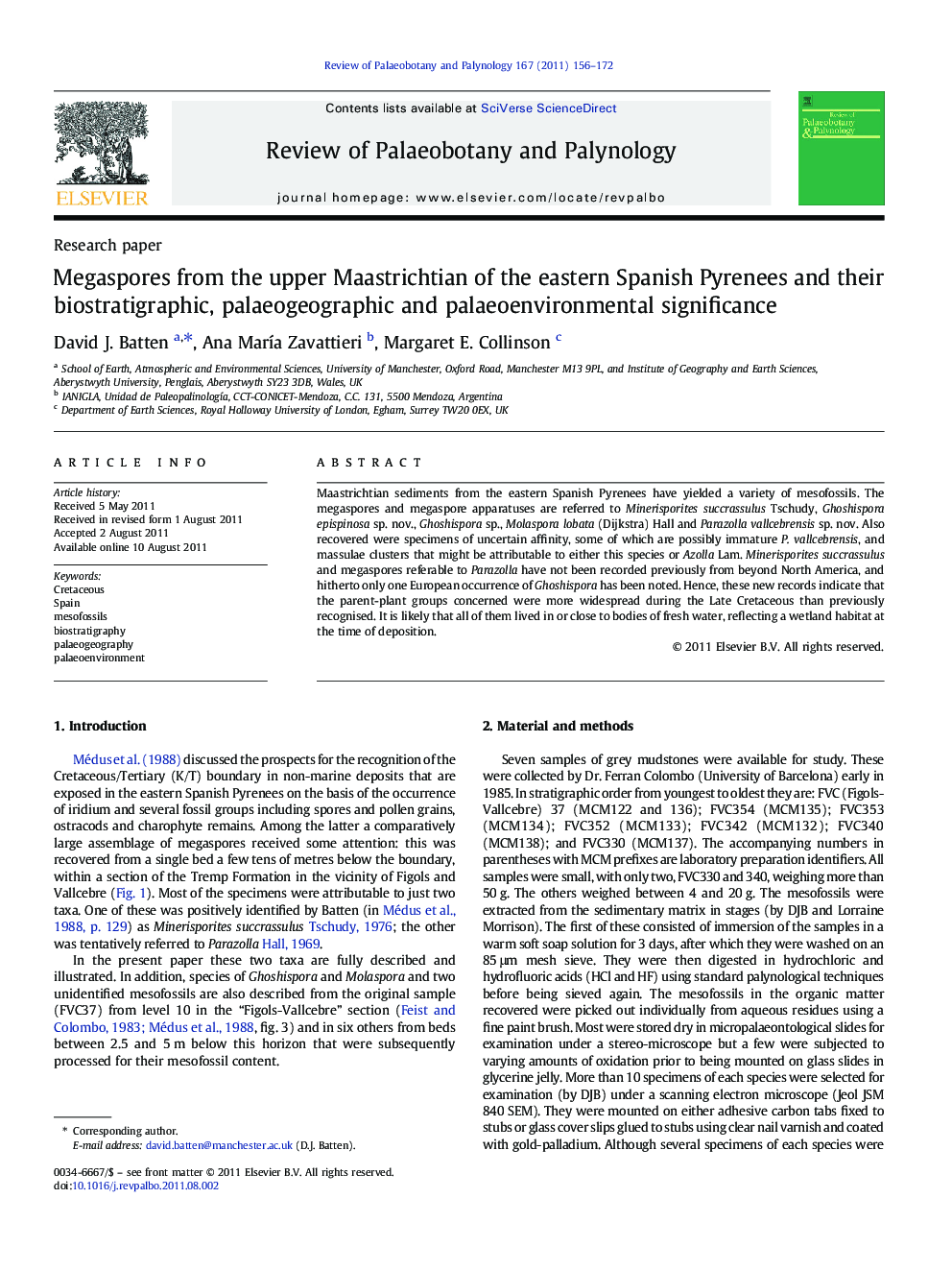| Article ID | Journal | Published Year | Pages | File Type |
|---|---|---|---|---|
| 4750620 | Review of Palaeobotany and Palynology | 2011 | 17 Pages |
Maastrichtian sediments from the eastern Spanish Pyrenees have yielded a variety of mesofossils. The megaspores and megaspore apparatuses are referred to Minerisporites succrassulus Tschudy, Ghoshispora epispinosa sp. nov., Ghoshispora sp., Molaspora lobata (Dijkstra) Hall and Parazolla vallcebrensis sp. nov. Also recovered were specimens of uncertain affinity, some of which are possibly immature P. vallcebrensis, and massulae clusters that might be attributable to either this species or Azolla Lam. Minerisporites succrassulus and megaspores referable to Parazolla have not been recorded previously from beyond North America, and hitherto only one European occurrence of Ghoshispora has been noted. Hence, these new records indicate that the parent-plant groups concerned were more widespread during the Late Cretaceous than previously recognised. It is likely that all of them lived in or close to bodies of fresh water, reflecting a wetland habitat at the time of deposition.
► Maastrichtian rocks in the Spanish Pyrenees contain megaspores and megaspore apparatuses. ► All of the mesofossils are described: two are new species. ► The parent plants were more widespread during the Cretaceous than previously thought. ► It is likely that all lived in or close to bodies of fresh water.
